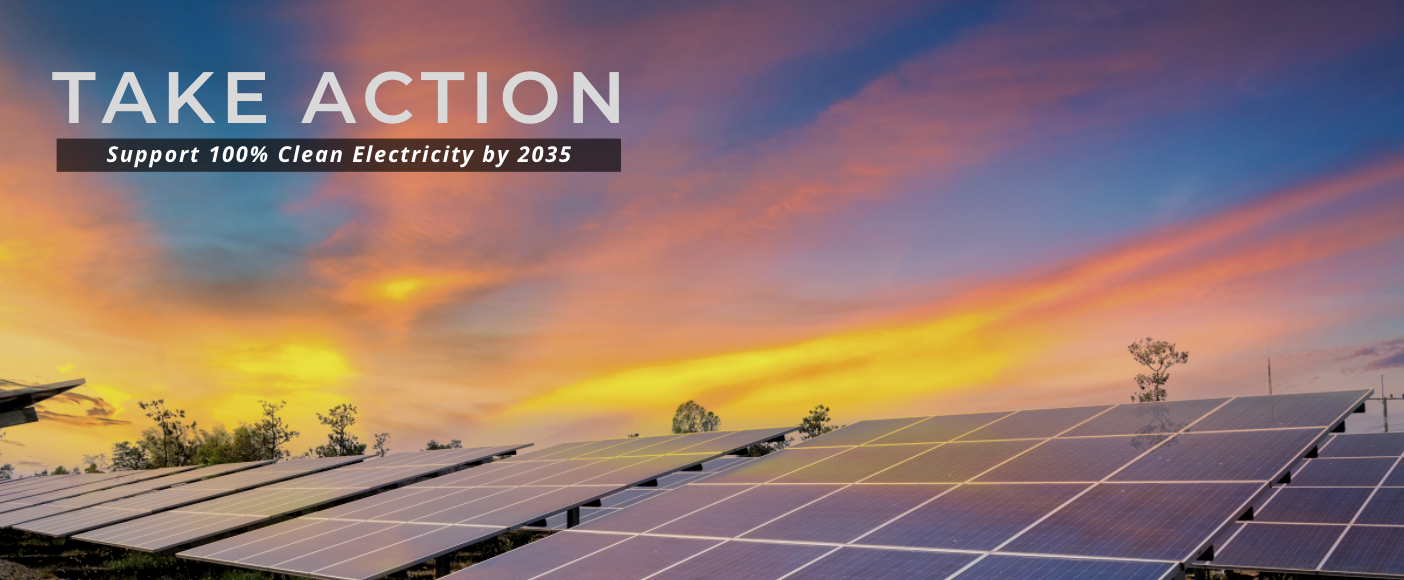A new report by Energy Innovation finds that there is a growing consensus among expert researchers that achieving 80% clean electricity by 2030 would be feasible, affordable, reliable, and deeply beneficial to the economy and public health.
The analysis examines 11 recent reports by universities, think tanks, nonprofits, and energy consultancies that study high penetrations of clean energy on the electricity grid and compares, contrasts, and synthesizes their findings.
The report comes as Congress is targeting achieving 80% clean electricity by 2030, as a stepping stone to 100% clean electricity by 2035, through a suite of policies in the Build Back Better Act, namely the Clean Electricity Performance Program.
We at SACE find this report helpful in understanding the implications of transforming our electricity system to very high levels of clean energy, so in order to learn more and help our members and supporters understand the findings of the report, we hosted a webinar with the primary author of the report, Dan Esposito from Energy Innovation. Please scroll down to learn about some of the main areas of agreement between the reports analyzed in the meta-analysis and for a recording of the webinar.
We hope you find this informative and helpful, and most of all, we hope that the amazing findings of this report motivate you to contact your members of Congress today and ask them to bring these benefits home by passing the Clean Electricity Performance Program and the other climate elements of the Build Back Better Act.

80% Clean Electricity by 2030 Would Save Many Peoples’ Lives
The air quality improvement from achieving high penetrations of clean energy, and offsetting fossil combustion power, would prevent 85,000 to 317,000 premature deaths through 2050.
80% Clean Electricity by 2030 Would Enable Huge Savings on Public Health and Environmental Costs
The lives saved from achieving high penetrations of clean energy, along with environmental benefits would result in $1 to $3 trillion in avoided health and environmental costs.
80% Clean Electricity by 2030 Would Be Affordable
Even excluding the public health and environmental cost savings, achieving 80% clean electricity by 2030 would be affordable. Because of the huge cost declines for solar, wind, and battery storage in recent years, transitioning to 80% by 2030 can be done at surprisingly low cost and would result in about the same energy prices as a business-as-usual scenario, with a range of a few percent more expensive or a few percent less expensive. Federal tax credits for clean energy, such as are being currently considered by Congress as part of the Build Back Better Act, would generally put downward pressure on cost increases. The estimated costs of transitioning to 80% clean electricity by 2030 in reports over the past year are much lower than those in reports published even just a few years ago due to the steeply declining cost of clean energy resources.
An 80% Clean Power Grid by 2030 Would Be Reliable
All studies examined in the meta-analysis found that a 70-90% clean electricity grid would be reliable and dependable to deliver power when we need it.
80% Clean Electricity by 2030 Would Create Lots of Jobs and Be a Huge Economic Driver
Robust clean energy policy, such as 80% clean electricity by 2030, would cause a net increase of 500,000 to 1,000,000 jobs and result in hundreds of billions to trillions of dollars in investment.
80% Clean Electricity by 2030 Meets the Moment in Addressing the Climate Crisis, When Combined With Electrification
The world’s foremost climate experts say that to avoid the worst impacts of the climate crisis and limit global warming to 1.5 degrees Celsius, the world must hit net-zero greenhouse gas emissions by the middle of the century, and in order to do that, we need to get halfway to zero by 2030. The 2030 goal was formally adopted by the United States and submitted to the world as our intended contribution to fighting the global climate crisis. Achieving 70-80% clean electricity by 2030, combined with fuel-switching of vehicles, buildings, and some industries from fossil fuels (gasoline, diesel, natural gas, etc.) to electricity are considered by the expert reports to be essential in achieving our national climate targets.
Achieving 80% Clean Electricity by 2030 Will Be Mostly Through Solar, Wind, and Battery Storage
All studies examined in the meta-analysis found that the least-cost pathways to achieving 80% clean electricity are through large expansions of solar and wind energy and battery storage. While other energy generation technologies can technically generate energy with lower carbon emissions than the power plants that will be phased out on the way to 80% clean electricity, the lowest cost pathways are almost exclusively through solar, wind, and battery storage. Deploying this much solar and wind energy would require building it two to three times the 2020 rate of deployment. This pace is widely considered feasible and achievable even if ambitious.
#InflationReductionAct #HR5376 #BBBA